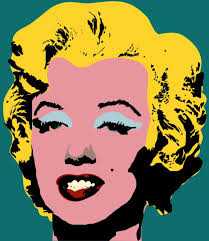Exploring Pop Art
A Captivating Fusion of Art and Popular Culture
Olivia Masters
7/26/20232 min read


Pop Art, a groundbreaking art movement that emerged in the mid-20th century, remains one of the most influential and recognizable artistic styles to date. Characterized by vibrant colors, bold imagery, and a celebration of popular culture, Pop Art challenged traditional artistic conventions and resonated with the masses. In this article, we dive into the world of Pop Art, exploring its origins, key artists, defining characteristics, and enduring impact on the art world.
Section 1: The Birth of Pop Art Pop Art emerged in the late 1950s and reached its peak in the 1960s, primarily in the United States and the United Kingdom. It was a direct response to the cultural changes of the post-war era, as artists sought to break away from the seriousness of Abstract Expressionism and embrace the everyday elements of contemporary life.
Section 2: The Key Artists of Pop Art Some of the most iconic figures in Pop Art include Andy Warhol, Roy Lichtenstein, Claes Oldenburg, and James Rosenquist, among others. Each artist brought their unique perspective and style to the movement, but they all shared a common interest in elevating mundane and mass-produced objects to the realm of high art.
Section 3: The Pop Art Aesthetic One of the defining characteristics of Pop Art is its use of bold colors and striking imagery. Artists often employed techniques such as silkscreen printing, comic book-style Ben-Day dots, and crisp, clean lines to create visually arresting artworks. The movement embraced the use of popular cultural icons, consumer products, and advertising imagery, giving rise to iconic works like Warhol's Campbell's Soup Cans and Lichtenstein's comic book-inspired paintings.
Section 4: Breaking Down Boundaries Pop Art blurred the lines between high art and popular culture, challenging the notion of what art could be. By incorporating everyday objects and celebrity figures into their works, Pop artists sparked debates about the role of art in society and questioned the traditional boundaries of artistic expression.
Section 5: The Legacy of Pop Art The impact of Pop Art continues to reverberate throughout the contemporary art world. Its influence can be seen in various art forms, from street art to fashion and design. The movement's celebration of popular culture and its democratization of art paved the way for subsequent generations of artists to embrace new forms of creativity and self-expression.
Pop Art remains a captivating and influential art movement that defied conventions and brought art closer to the masses. Its celebration of popular culture, bold aesthetics, and willingness to challenge the status quo set the stage for a new era of artistic expression. As we continue to appreciate and celebrate the legacy of Pop Art, we are reminded of its enduring impact on the art world and its timeless relevance in the ever-evolving landscape of contemporary art.
